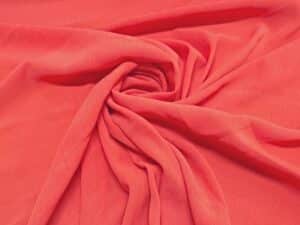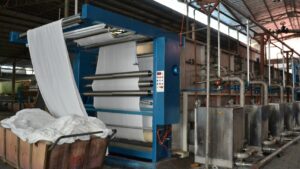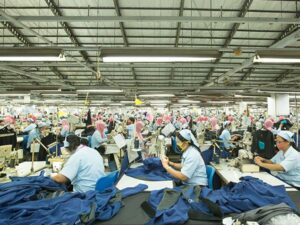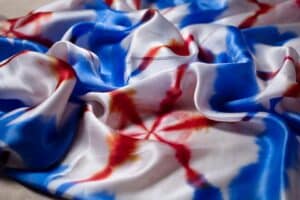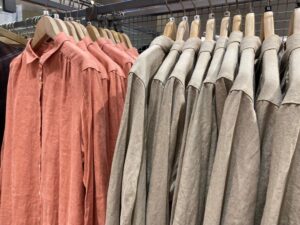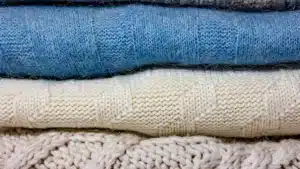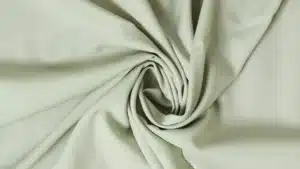
Comparing Nylon and Polyester for Outdoor Gear
Explore the key differences between nylon and polyester fabrics.
Features | Nylon | Polyester |
|---|---|---|
Durability | Highly durable, excellent abrasion resistance. | Very durable, good UV resistance. |
Moisture Management | Absorbs more moisture, longer drying times. | Dries quickly, hydrophobic properties. |
Breathability | Generally less breathable. | More breathable, moisture-wicking. |
Softness | Feels softer against the skin. | Can feel rougher, varies by construction. |
Weight | Lightweight with good flexibility. | Lightweight but less flexible. |
UV Resistance | Gradually loses strength with UV exposure. | Resists UV rays better. |
Environmental Impact | Higher carbon footprint, less energy-efficient. | Lower emissions, more energy-efficient. |
Cost | Generally more expensive. | More affordable option. |
When choosing outdoor clothing, you want fabrics that balance durability, comfort, and performance. Nylon and polyester are two popular options for performance wear, each offering distinct advantages.
Nylon stands out for its exceptional durability, making it ideal for rugged activities.
Polyester, on the other hand, excels in moisture management, drying quickly and repelling water. Both fabrics share a petroleum-based origin, but polyester’s recyclability makes it a better choice for sustainability.
Whether you’re hiking, running, or camping, understanding these differences helps you select the right material for your needs.
Key Takeaways
Nylon is very strong and resists scratches, great for hiking and climbing.
Polyester dries fast and pulls sweat away, good for running and humid weather.
Both fabrics are light and resist water, but polyester blocks sunlight better, great for sunny days.
Pick recycled nylon or polyester to help the environment while staying active outdoors.
Use nylon for cold weather and flexible activities, and polyester for hot, humid weather.
Overview of Nylon and Polyester
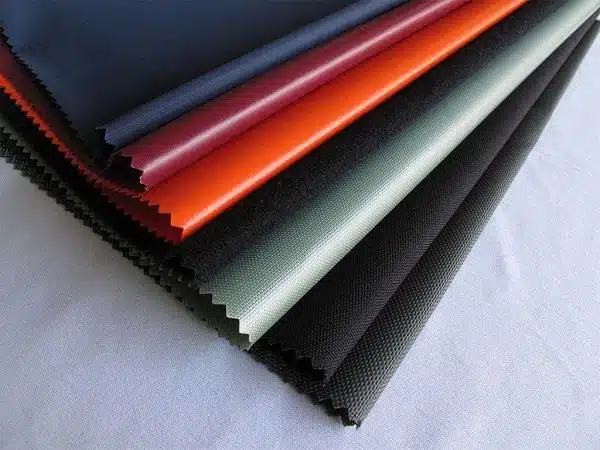
What is Nylon?
Nylon is a synthetic fabric known for its exceptional strength and versatility. It was first developed in the 1930s as a substitute for silk and has since become a staple in outdoor clothing. Nylon fabric offers superior abrasion resistance, making it ideal for rugged activities like hiking or climbing. Its elasticity allows it to stretch without losing shape, which is why it’s often used in activewear. Additionally, nylon repels water when treated with a durable water-repellent (DWR) finish. This makes it a reliable choice for outdoor gear such as tents, backpacks, and jackets.
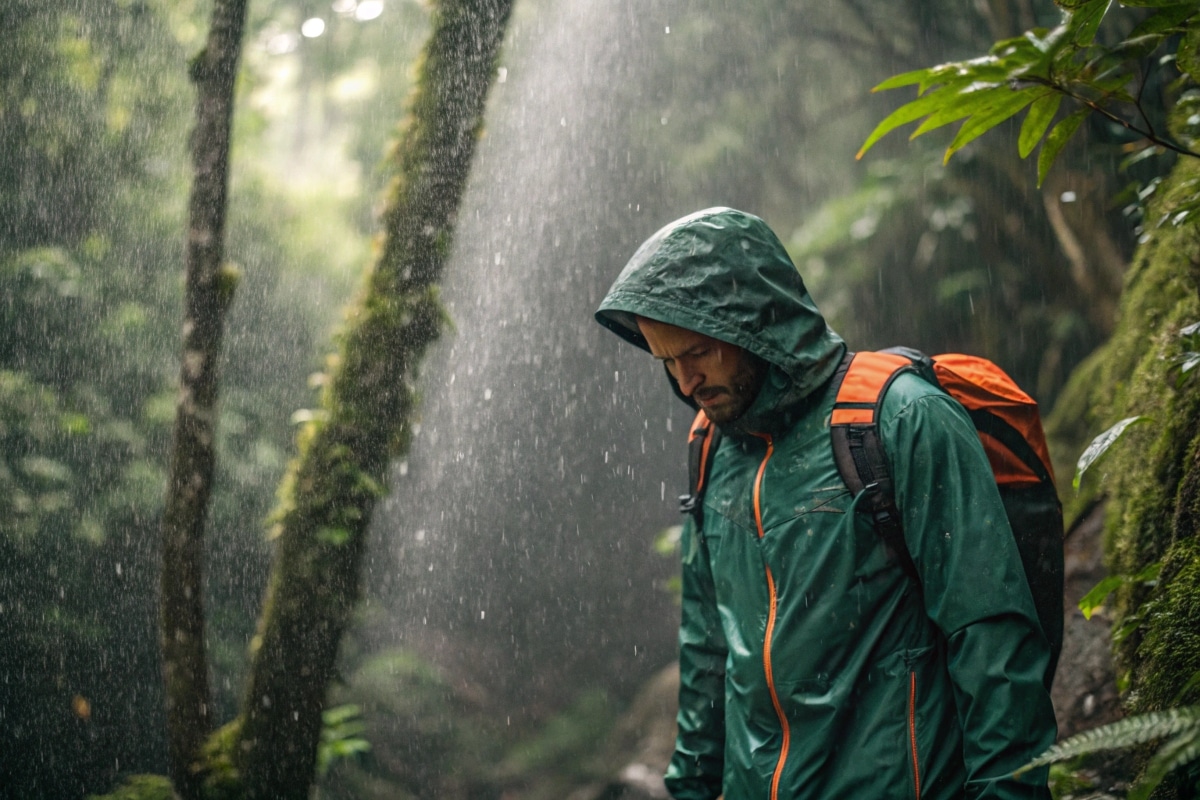
Property | Value |
|---|---|
Elasticity | |
Abrasion resistance | Excellent |
Moisture regain | |
UV-resistance | Gradually loses strength over time with UV exposure |
Nylon fabric feels soft and lightweight, providing comfort during long outdoor adventures. Its durability ensures it withstands wear and tear, even in harsh conditions.
What is Polyester?
Polyester is another synthetic fabric widely used in outdoor clothing. It is made from polyethylene terephthalate (PET), a polymer derived from petroleum products. Polyester fabric is highly durable and resists shrinking, stretching, and wrinkling. Its moisture-wicking properties make it perfect for activities that involve sweating, such as running or cycling. Unlike nylon, polyester dries faster and is more resistant to UV rays, making it suitable for sunny environments.

Property | Description |
|---|---|
Moisture-wicking | Effectively transports moisture away from the body, enhancing comfort during exercise. |
Durability | Strong and resistant to wear, ideal for outdoor clothing. |
UV Protection | Blocks harmful UV rays, providing additional protection during outdoor activities. |
Water Repellency | Repels water, enhancing comfort in wet conditions. |
Polyester fabric can feel slightly stiffer than nylon, but advancements in technology have made it softer and more comfortable. Its affordability and versatility make it a popular choice for outdoor enthusiasts.
Key Similarities Between Nylon and Polyester
Nylon and polyester share several characteristics that make them excellent choices for outdoor clothing. Both fabrics are synthetic, durable, and resistant to wear and tear. They repel water, ensuring comfort in wet conditions. Additionally, both materials are lightweight, making them ideal for active pursuits.
Performance Characteristic | Nylon | Polyester |
|---|---|---|
Durability | Very durable, high resistance to UV rays and moisture | |
Moisture Handling | Absorbs more moisture, longer drying times | Hydrophobic, dries quickly |
Breathability | Generally less breathable | More breathable, moisture-wicking |
Softness | Tends to be softer | Can feel rougher, varies by construction |
Both fabrics are also easy to care for and maintain. While nylon offers better elasticity, polyester excels in UV resistance. Understanding these similarities helps you appreciate why nylon vs polyester is a common debate among outdoor enthusiasts.
Key Comparison Factors
Durability
Resistance to Wear and Tear
When it comes to wear and tear, nylon outshines polyester. Its high strength and excellent abrasion resistance make it a top choice for rugged outdoor activities. For example, nylon is often used in military gear and pet products due to its tear-resistant properties. Polyester, while durable, offers moderate abrasion resistance. However, advancements in polyester textiles have improved its strength, making it suitable for lightweight outdoor gear like tents and backpacks.
Material | Durability | Abrasion Resistance | Tear Resistance |
|---|---|---|---|
Nylon | High | Excellent | High |
Polyester | Moderate | Good | Moderate |
Longevity in Outdoor Conditions
Nylon and polyester both perform well outdoors, but their longevity depends on environmental factors. Nylon’s high durability makes it ideal for long-term use, though it can degrade under prolonged UV exposure. Polyester, on the other hand, resists UV rays better, maintaining its strength and color even in intense sunlight. This makes polyester a better choice for sunny environments, while nylon excels in shaded or rugged conditions.
Moisture Management
Water Resistance and Quick-Drying Properties
Both fabrics repel water effectively, but polyester has the edge in quick-drying capabilities. Its hydrophobic nature allows it to wick moisture away from your skin, keeping you dry during high-intensity activities. Nylon absorbs slightly more water, which can increase drying time. However, when treated with a durable water-repellent (DWR) finish, nylon becomes highly water-resistant, making it suitable for wet conditions.
Breathability for Outdoor Activities
Polyester offers better breathability compared to nylon. Its moisture-wicking fabrics enhance airflow, making it ideal for activities like running or cycling. Nylon, while less breathable, compensates with its elasticity and comfort, making it a great option for colder climates where breathability is less critical.
Comfort
Softness and Feel Against the Skin
Nylon feels softer and smoother against the skin, providing superior comfort during extended wear. Polyester, while slightly stiffer, has improved in softness due to advancements in fabric technology. If you prioritize comfort, nylon is the better choice for activities requiring prolonged wear.
Weight and Flexibility
Both fabrics are lightweight, but nylon’s elasticity gives it an edge in flexibility. This makes it ideal for activities requiring a wide range of motion, such as climbing or hiking. Polyester, while less flexible, remains lightweight and durable, making it a versatile option for various outdoor activities.
Practical Recommendations for Outdoor Activities

Best Fabric for Hiking
When hiking, you need clothing that can withstand rugged terrain and unpredictable weather. Both nylon and polyester perform well in these conditions, but each has unique advantages:
Polyester: Its durability and resistance to stretching make it ideal for long hikes. Polyester is lightweight and resists mold/mildew, ensuring comfort in damp environments. Its quick-drying properties also help you stay dry during sudden rain showers.
Nylon: Known for superior abrasion resistance, nylon is more suited for outdoors where rough surfaces or heavy backpacks are involved. It dries quickly and offers excellent water-repellent properties, making it a reliable choice for wet or muddy trails.
For most hiking conditions, polyester works well for its breathability and moisture-wicking abilities. However, if you expect rough terrain or heavy wear, nylon provides better durability.
Best Fabric for Running

Running outdoors requires lightweight, breathable fabrics that manage moisture effectively. A comparison of nylon and polyester highlights their suitability for this activity:
Fabric | Key Properties | Best Use Cases |
|---|---|---|
Polyester | Lightweight, moisture-wicking, and resistant to stretching and abrasion. | Ideal for running in hot or humid conditions. |
Nylon | Quick-drying and highly water-repellent, with superior abrasion resistance. | Suitable for colder climates or rainy weather. |
Polyester stands out for its moisture-wicking capabilities, keeping you dry and comfortable during intense runs. Nylon, while durable, may feel less breathable, making it better for cooler or wetter conditions. For most runners, polyester is the preferred choice due to its flexibility and comfort.
Best Fabric for Camping

Camping demands fabrics that balance durability, comfort, and weather resistance. Here’s how nylon and polyester compare:
Polyester Fabric: Durable and water-resistant, polyester is excellent for tents and outdoor gear. It dries quickly, preventing mold growth, and maintains its strength in sunny conditions.
Nylon Fabric: Lightweight and tear-resistant, nylon works well for backpacks and other portable gear. Its water-repellent properties make it suitable for light rain, but it may not hold up in heavy downpours.
Cotton Canvas Fabric: While not synthetic, cotton canvas is highly breathable and prevents condensation, creating a comfortable environment for extended stays.
For camping, polyester is often more suited for outdoors due to its durability and resistance to environmental factors. Nylon, however, is a great choice for lightweight gear that needs to endure wear and tear.
Best Fabric for Skiing

Skiing demands clothing that can handle cold temperatures, snow, and moisture while keeping you comfortable. Choosing the right fabric ensures you stay warm, dry, and mobile on the slopes. Both nylon and polyester offer unique advantages for skiing gear, but their performance varies based on specific needs.
Nylon excels in durability and flexibility, making it a great choice for outer layers like ski pants and jackets. Its abrasion resistance ensures it withstands the wear and tear of skiing, especially when you brush against icy surfaces or carry heavy gear. Treated nylon fabrics with waterproof coatings or membranes, such as Gore-Tex, provide excellent protection against snow and moisture. This keeps you dry even during heavy snowfall or when sitting on wet ski lifts. Nylon’s elasticity also allows for better movement, which is essential for navigating challenging slopes.
Polyester, on the other hand, shines in moisture management and insulation. Its hydrophobic nature wicks sweat away from your body, keeping you dry during intense skiing sessions. Polyester is often used in base layers and mid-layers due to its ability to retain warmth while remaining lightweight. Advanced polyester fabrics with waterproof membranes offer top-tier water resistance and breathability. These features make polyester a reliable option for skiers who prioritize staying dry and comfortable in varying weather conditions.
Tip: Look for three-layer fabrics with high waterproof ratings for maximum protection.
Tips for Caring for Nylon and Polyester
Washing and Drying Guidelines
Proper washing and drying are essential for maintaining the performance of nylon and polyester fabrics. Following these steps ensures your outdoor clothing lasts longer and retains its functionality:
Nylon Washing Tips:
Use cool or lukewarm water (30-40°C) to prevent heat damage.
Choose mild detergents to protect the fabric's durability.
Avoid heavy washing cycles to reduce wear and tear.
Rinse thoroughly to remove detergent residues that can harm the fabric.
Polyester Washing Tips:
Wash at 40°C using cold or warm water to prevent shrinkage.
Opt for light detergents to protect the fibers.
Avoid bleach, as it can damage the fabric and cause fading.
Drying Recommendations:
Air dry nylon flat to prevent stretching and brittleness. Keep it out of direct sunlight to avoid UV damage.
Polyester can be machine-dried at moderate settings or air-dried flat to maintain its shape. Avoid over-drying to minimize static buildup.
Tip: Always check the care label on your clothing for specific instructions. Proper maintenance ensures minimal fading and easy maintenance of your outdoor gear.
Stain Removal Tips
Outdoor activities often lead to stains, but you can tackle them effectively with these methods:
Lead Pencil: Use an art gum eraser to lift excess marks. For durable fabrics, pretreat with a heavy-duty liquid detergent.
Mildew: Shake or brush off mildew outdoors. Pretreat with detergent and wash in hot water.
Odor: Launder garments to remove most odors. For persistent smells, use activated charcoal or calcium carbonate.
Paint (Latex): Treat wet paint by soaking in cold water and washing with heavy-duty detergent.
Rust: Use special rust removers. Avoid chlorine bleach, as it can make stains permanent.
Note: Handle stains promptly to prevent them from setting. This ensures your clothing remains in top condition for your next adventure.
Storage Recommendations
Storing nylon and polyester correctly helps maintain their quality and longevity. Use these guidelines:
Fabric Type | Storage Recommendation |
|---|---|
Nylon | Store in a dry place. Fold instead of hanging for long periods to prevent stretching. |
Polyester | Keep in a dry, UV-free area to avoid deterioration. |
Tip: Avoid storing either fabric in damp or humid conditions. Proper storage prevents UV damage, wind exposure, and fading, ensuring your gear stays ready for use.
Both nylon and polyester excel in different aspects, making them versatile choices for outdoor clothing. Nylon offers exceptional abrasion resistance and quick-drying properties, making it ideal for rugged activities like hiking or military applications. Polyester stands out for its durability, lightweight nature, and resistance to mold and mildew, which makes it perfect for humid or wet conditions. Environmental factors like UV exposure, precipitation, and humidity should guide your decision. By considering your activity and environment, you can select the fabric that best meets your needs.
FAQ
What is the main difference between nylon and polyester?
Nylon is softer and more durable, while polyester dries faster and resists UV rays better. Nylon suits rugged activities, and polyester works well in sunny or humid conditions. Both fabrics excel in outdoor clothing but cater to different needs.
Tip: Choose nylon for durability and polyester for moisture management.
Which fabric is better for cold weather activities?
Nylon is better for cold weather due to its elasticity and comfort. It provides flexibility and warmth, making it ideal for skiing or climbing. Polyester works well as a base layer for insulation but may not offer the same flexibility.
Can nylon and polyester be recycled?
Yes, both fabrics can be recycled. Recycled nylon often comes from industrial waste, while recycled polyester is made from plastic bottles. These options reduce environmental impact and promote sustainability.
Note: Look for labels indicating recycled content when shopping for eco-friendly outdoor clothing.
How do I care for nylon and polyester clothing?
Wash nylon in cool water and air dry to prevent damage. Use warm water for polyester and machine dry on low heat. Avoid bleach for both fabrics. Proper care ensures your clothing lasts longer and retains its performance.
Which fabric is more affordable?
Polyester is generally more affordable than nylon. Its lower production cost makes it a budget-friendly option for outdoor clothing. Nylon, while slightly pricier, offers superior durability and abrasion resistance, making it worth the investment for rugged activities.


